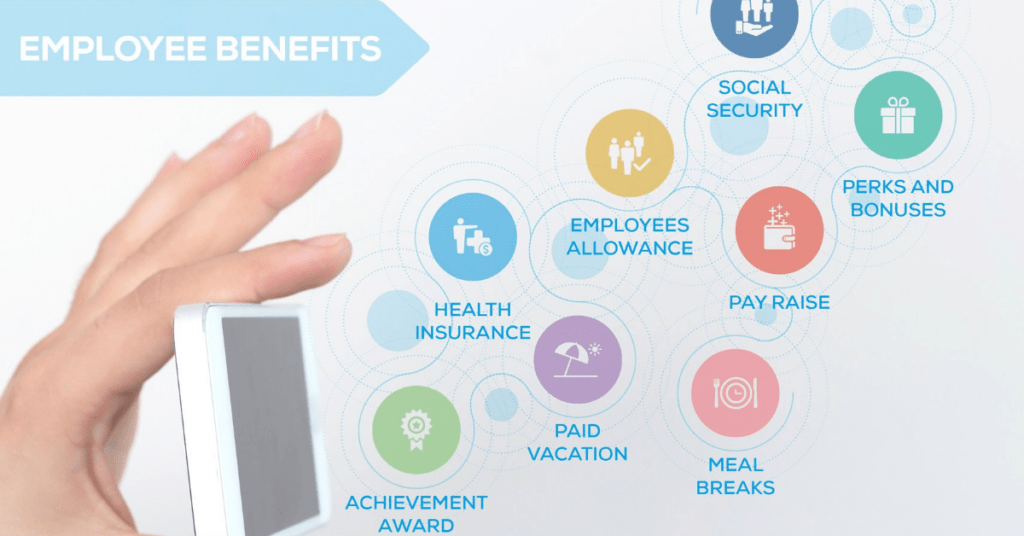Contents
What is Employee Benefit Programs?

Most companies see these benefit programs as a way to keep employees feeling appreciated for all the work they do. And with so many great benefits offered, it’s easy to find one that will appeal to you at your new job. Employee Benefit programs are one of the many perks that employers offer in order to boost employee morale and thus retention. Companies are coming up with creative ways to incentivize their employees with benefits.
This helps them to keep them happy and motivated for their jobs. These programs often include everything from pet insurance, to being able to bring your dog to work. Let’s explore some of the top benefits companies offer and what you should look for when deciding on a place where you want to work.
Types of Employee Benefit Programs

Benefits may vary depending on the size of a business and how much an employer feels they can afford. However, regardless of company size, it is important to have some sort of employee benefits program in place that will help your employees feel appreciated by their employers as well as help boost morale within the workplace.
Many businesses are finding that providing benefits to their employees is a huge expense. But it can also be an investment in the company’s future. There are many different types of employee benefit programs out there, so you need to decide which one will work best for your business needs.
Staffing/HR Consulting

Employers can hire the services of a staffing agency to provide them with new employees. This type of benefit is great for businesses that do not have HR departments or who lack staff qualified to manage benefits. Hiring consultants will take care of all aspects including hiring, payroll, and health insurance carrier selection.
Employee Assistance Programs (EAP)
This type of program provides your employees with access to a variety of services that they can utilize in their personal lives. These benefits offer confidential counseling sessions, legal advice, and referral information for child care, housing issues, or financial difficulties among other things.
Tuition Reimbursement

If you’re looking to make investments in your employees and their personal growth, then tuition reimbursement is a great benefit to provide. Your staff can use these funds to pay for college or community classes that will broaden their experience at work.
Dental Insurance
Many dental plans are provided by employer-sponsored health insurance carriers; however, you may want to consider linking dental insurance to your medical carrier as well. This ensures that both types of coverage are covered under the same plan, making it easier for employees to stay on top of their benefits and manage their overall health.
Health Savings Accounts (HSAs)

HSAs help employers to lower healthcare costs by encouraging employees to be proactive about managing their own health needs. The benefit works like a standard HSA except you can save money tax-free throughout the year in order to cover other out-of-pocket health expenses such as copays or medications later down the road.
“Employee Discount” Program
A great way for businesses to pay back some of its expense is with an employee discount program! In this type of plan, individuals can use their employee discount to purchase company products and services at a reduced rate.
Wellness Programs
The days of traditional wellness programs are over; it’s time for something new! These types of benefits encourage employees to be proactive about the health needs that they have. This helps them in such as staying active or eating healthier foods by offering rewards like gift cards, cash bonuses, and even free gym memberships. Not only do these plans help individuals manage their own wellbeing but your business can also reduce its healthcare expenses in the process too.
Adoption Assistance Program

Providing adoption assistance is one benefit you don’t want to pass up on when considering which ones will work best for your business’s future success. You can provide things like reimbursement tuition fees, legal fees, travel expenses, and healthcare assistance for both the adoptive parents as well as their biological children.
Employee Discounts
Businesses can implement a program that allows employees to purchase company products at a discounted rate. This is a great way to help increase morale within your workforce. It also encourages new ways of thinking about how you develop new ideas or solve problems on behalf of your customers.
Flexible Spending Accounts (FSA)

This type of plan allows employees to set aside a certain amount of money throughout the year that they can use toward healthcare expenses. In addition, FSA plans typically offer items such as childcare and dependent care assistance as well as adoption assistance programs. These types of benefits are great for those who would like to save up some funds. This is in order to take advantage of tax savings or other financial opportunities down the road.
401(k) Program
Although not technically an “employee benefit” per see, this is one you will definitely want to consider when looking at your options on which ones work best for the future success of your business. A 401(k) program makes it easy for businesses to help their employees save and invest money in one place. Not only does this allow your business to manage its costs but it also takes the pressure off of you as an employer when it comes to helping provide for retirement.
Legal Insurance Program
Legal insurance plans help protect your company from the financial risks that come with lawsuits and other legal disputes. You can also provide things like general liability protection as well as errors & omissions coverage too. These benefits make it easy for small businesses to ensure they stay protected in case something should ever happen.
Onsite Clinics/Medical Centers

Operating an onsite medical center helps to reduce absences. It also provides individuals with a place they can go to receive medical care. It helps when they are sick or in need of assistance with their own healthcare needs. These types of programs also come at a fraction of the cost compared to traditional insurance plans.
Vision Benefits
Another great way for businesses to offer employee benefits is through vision coverage; this type of plan allows employees to take advantage of discounts on eye examinations, eyeglass frames, and lenses, contact lenses as well as related services like laser surgery too. Businesses that choose not only invest in their workforce but also show them how much you appreciate it. This tends to create happier, healthier workers who will work harder than ever before.
Voluntary Benefits

You can offer voluntary benefits like additional life insurance, critical illness, and accident coverage as well as disability protection too. These types of plans make it easy for businesses to ensure they are offering their employees a way to protect themselves and the ones who matter most whether you’re here or not.
Steps to Create Employee Benefit Program
In order to create an Employee Benefits Program, you need to know what is important to your employees. Some options might include a company newsletter, a nap room for employees, or off-site retreats. You’ll also need to think about things like the type of benefits you offer and the salary structure. In order to create an Employee Benefits program, there are a number of steps that must first be completed.
- First, it is important to identify the main benefits your company offers and whether or not they are being utilized.
- Second, you need to examine the current salary structure and determine what type of wage system you will have.
- Third, employers should be aware of how much coverage their insurance policy has–knowing this information is essential for making any tweaks if needed.
- Fourth, the organization needs to think about all aspects that employees care about in terms of benefits–these can include things like napping rooms or retreats off-site.
- Fifth, employers should be aware of how beneficial it can be to offer their employees additional vacation days–especially when there are still other benefits to be had.
- Sixth, the organization needs to know what their opinion on 401(k)’s is–they may not need one, but it can help them save money in taxes each year that they contribute.
- Seventh, employers must decide whether or not there will be matching contributions for employees enrolled in a particular benefit plan.
- Eighth, an employer should consider checking with their current insurance provider so they get better insight into what services might cost more than anticipated.
- Lastly, it’s important to always remember why companies offer any type of employee benefits program so you understand how valuable your company’s contribution is–which could change over time, however.
Advantages of Employee Benefit Programs

The advantages of Employee Benefit Programs are:
- Contributing and to the financial well being of their employees
- Provides a competitive advantage over other employers
- Improves employ bonuses morale
- Increases productivity and efficiency at work by eliminating some of life’s uncertainties.
- Saves money on taxes
Disadvantages of Employee Benefit Programs

The disadvantages of Employee Benefit Programs
- May is not able to afford all benefits they want for their employees: This means employers must evaluate employees’ needs.
- Employees may not use all benefits they are offered: This means an employer must determine how much coverage to offer.
- The insurance system is complicated and hard to describe
- Their contribution is taxable income to the recipient
- Employees may take better care of themselves if not covered by an insurance plan since there is no incentive to do so as opposed to having it as part of their benefits package.
A Word From Mantra Care
Employee Benefit programs are one of the many perks that employers offer. This is in order to increase employee motivation and thus retention. Companies are coming up with creative ways to incentivize their employees with benefits. This helps to keep them happy and motivated for their jobs. Employee Benefits programs are important for businesses to have, but selecting the right one can be a challenge. In this article, we’ve outlined some of the most common types of EBP that companies offer and what you need to know when choosing an employee benefits program. We hope these insights will help in your decision-making process so you can find a plan that meets all your company needs while also taking care of your employees with top-notch coverage.
Do you want to keep your employees happy, healthy, and productive? Join our employee assistance program and get a healthier workplace.


